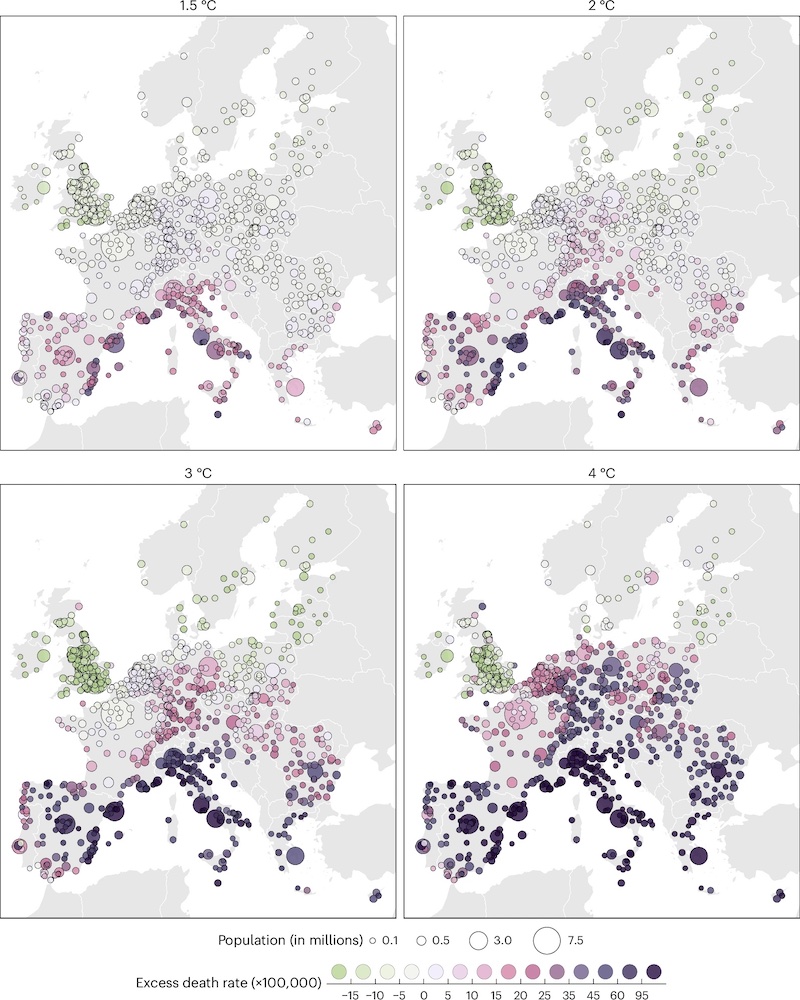Studies on the upcoming impacts of climate change keep rolling in, each bringing a new slightly worse outlook than the last. By 2100, we expect a temperature rise of 3 degrees higher compared to pre-industrial times. On Monday, January 27, a British study was published in Nature Medicine, analyzing the link between temperature rise and mortality rates, heightening the concerns already expressed by scientists...
Lack of #climate action could see Europe’s heat-related deaths triple by 2100 ☀️
— London School of Hygiene & Tropical Medicine (@LSHTM) August 22, 2024
Study from @MasselotPierre @malmistry1977 @AGasparrini75 & colleagues suggests southern Europe most at risk of dangers of extreme #heat
👉https://t.co/PrCD89UoUY pic.twitter.com/evzjKVmYK5
Heat-related deaths surpass those related to cold
The observation is as clear as it is terrifying: by the end of the century, no less than 2.3 million people, just across Europe, are at risk of becoming victims of extreme temperature increases. To support this claim, scientists have applied several theories based on IPCC scenarios to 854 urban areas in 30 different countries.

©Masselot, P., Mistry, M.N., Rao, S. et al. Estimating future heat-related and cold-related mortality under climate change, demographic and adaptation scenarios in 854 European cities. Nat Med (2025)
« We have shown that, without adaptation to heat, the increase in heat-related deaths systematically exceeds any decrease in cold-related deaths across all scenarios considered in Europe », the study states, noting that currently, « it has been indicated that the burden of cold-related mortality is significantly greater than that attributable to heat ». In the worst-case scenario, the number of deaths...the death toll could rise by 49.9%, with 2,345,410 deaths related to climate change potentially recorded during the period 2015-2099.
Possible Solutions Still in Reach
The most at-risk areas are mainly around the Mediterranean basin, in Italy, southern France, and Spain. However, all is not lost if urgent measures are taken. The study suggests, for example, reducing paved areas and increasing green spaces and waterways. Depending on the initiatives implemented, this high mortality rate could be reduced by 10 to 90%.



